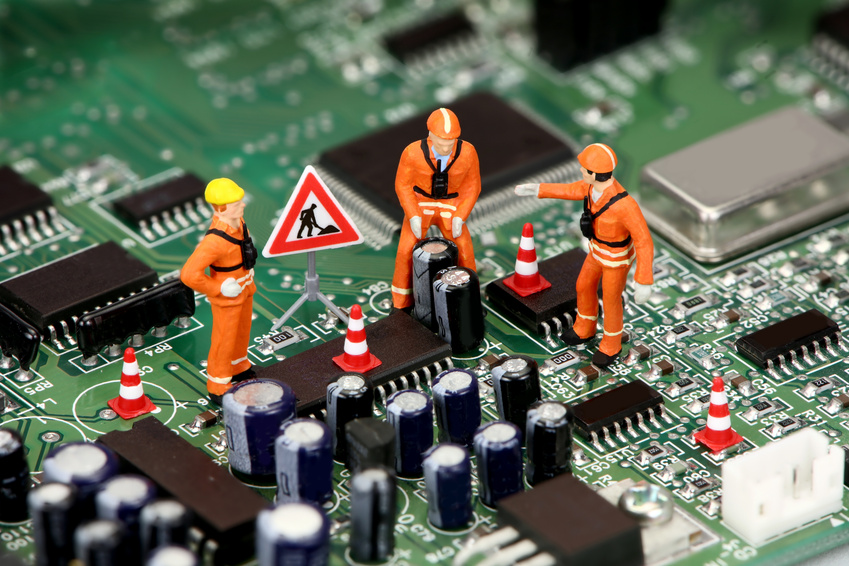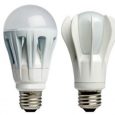
Motherboards are considered the most essential part of a computer system. This is where the computer’s central processing unit (CPU), random access memory (RAM), SSD Storage devices and input and output buses or connectors are mounted. It is made up a sheet of non-conductive material that has thin layers of copper referred to as traces printed onto it. These narrow traces form the circuits between various components mounted on the motherboard. It typically consists of a CPU socket, a power connector, Main memory slots usually DRAM chips, a Northridge chip that forms the heat sink, a hard drive slot, a connector for input output devices, a connector for peripheral devices and a slot for video or graphic cards. Over time desktop computers and laptops slow down and eventually stop working. Your technician tells you that the motherboard failed and it would be quite costly to repair. This leaves you wondering what caused the crash.
What causes motherboard failure?
The most common cause of motherboard failure is usually overheating. Over time too much heat causes wear and tear on the components of the motherboard rendering it useless. When multiple operations are performed simultaneously and power supply is continuous, it begins to overheat to a point that the in-built cooling fan can’t cope. Overheating can also occur as a result of a clogged cooling fan. Fluctuations in power supply in some parts of the motherboard can also cause overheating. When using your laptop, especially on soft surfaces and your laps, the cooling intake and exhaust slots are covered blocking airflow resulting in overheating. Prolonged use of the machine also causes overheating. Dust, hair, debris and smoke can usually accumulate in laptop fan basins and their combination forms a sticky tar that is difficult to clean. This may lead to overheating which is quite detrimental.
Sometimes laptops roll of the line with manufacturing defects that could be detrimental to them in the long run. Mass production leaves room for error. Cheap materials and incorrect engineering could result in improper functioning of the laptop making it useless.
Another common motherboard killer is hard impacts. Accidental impacts to your laptop could knock off or break motherboard components causing failure. Dropping or sitting on your laptop could damage the circuits on the motherboard. Spills are also major laptop killers. The motherboard is conveniently located below the keyboard on a laptop to make it small and compact. Spills on the keyboard can instantly kill the motherboard by short-circuiting its circuits and hardware components.
When sudden electrical surges or spikes occur on the motherboard they can cause damage to its delicate components. This is caused by power hungry appliances, problems with wiring and unreliable power supply. This mostly happens due to sudden changes in voltage especially though Ethernet cables that are not usually surge protected.
Over time, laptops just like human beings will age. Performance slows, batteries die and eventually the machine won’t start. This is bound to happen as nothing lasts forever.
Signs of motherboard failure?
Just as with an illness your motherboard will show symptoms before dying. These early warning signs if given keen attention and treated could save you an expensive trip to your laptop technician. They can also help you determine the precise source of the problem to help you fix it when it dies. Observance is key here. One common sign of a motherboard going bad is slow boot up times. This could mean that one of the chips or circuits on the motherboard isn’t working correctly. Another symptom is when the computer doesn’t recognize peripheral devices when they are connected to the computer. Connected peripheral devices may also briefly stop working or start working problematically. When computers start, a Power-On-Self-Test is performed. If this POST isn’t performed it could be a sign of impending motherboard failure. Burning smell from within the laptop or burn marks on the motherboard are a sign of short-circuiting which could kill a motherboard. If you open your laptop and observe leaking or swollen capacitors, this is a sign of impending hardware trouble. It isn’t easy observing signs of failure when it comes to motherboards. It may happen so abruptly while you’re working leaving you with a non-functional shell of hardware. Random and unexplained powering down of a machine could be an indicator of something going wrong with the machine. When the machine powers up and there is no image on the screen or the in-built keyboard and touchpad aren’t working, this could be an indicator of something going wrong on the motherboard. The computer may also slow down and lag even when running non-demanding operations. Understanding other functional parts of the computer could help you diagnose the problem by eliminating them one by one.
How to prevent motherboard failure
To keep your motherboard in good health, keep your machine well ventilated and ensure cooling fan basins are not blocked to avoid overheating. Try using your laptop on flat hardened surfaces to keep the fan basins open and ventilated. It is advisable to try cleaning your laptop frequently, at least once a week. This can be done by blowing dust away. Once in a while have your technician check your motherboard for short circuits to arrest the problem early enough. However, you should avoid tampering with the internal circuitry frequently as this could speed up wear and tear. Avoid running many operations on your machine and operate within its limits to avoid putting a lot of stress on your system processor and motherboard. It is also advisable to let your machine rest and avoid long hours of use. Make sure you are using the correct power pack to avoid frying your circuit board. It is also advisable to add surge protectors to your connections to protect your machine from volatile surges. Avoid powerful magnetic fields as magnets are detrimental to computer systems. Keep fluids and water away from your machine to avoid spills. These days’ laptops also have covers and padding to protect them from drops and hard impacts. This should be considered as a means to safeguarding your devices. Generally avoid dropping and hard impacts by avoiding unnecessary movement and not performing rigorous activity with your laptop. Giving your laptop the best healthy treatment will give it a long lifespan letting you enjoy its value longer.
Conclusion
Motherboards are the heart and backbone of a computer. It is easy to fix other parts of your laptop. However motherboard repairs are the most difficult and expensive. In most cases it could even mean purchasing a new motherboard. Bad practices and poor maintenance could ruin even the best laptop motherboard. It is advisable to keep your laptop healthy and give it your best so it can serve you most conveniently for a long time.




